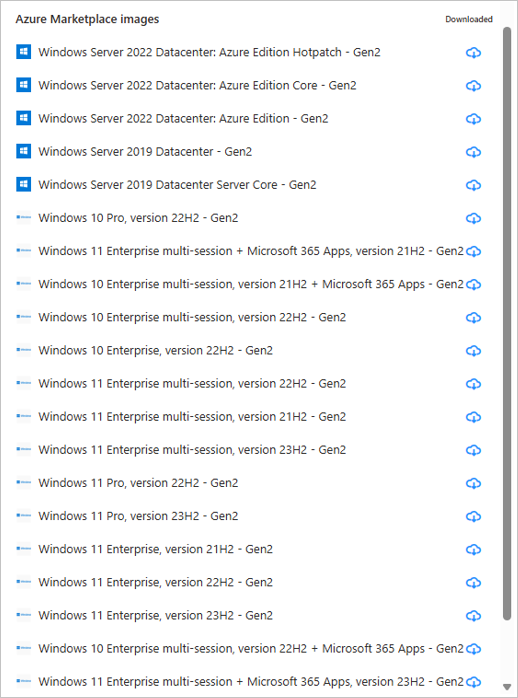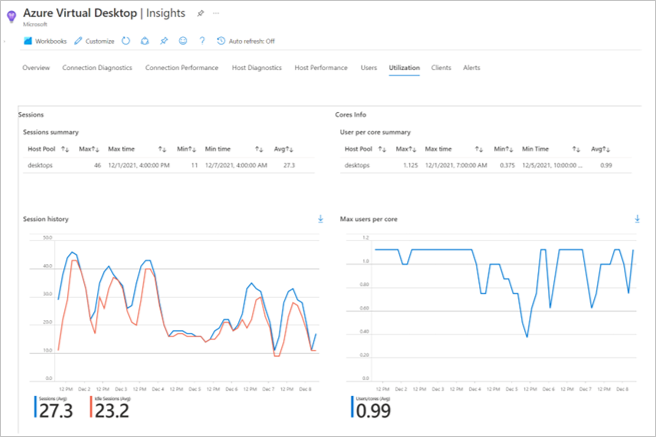Steve Downs, Principal Product Manager, AVD for Azure Stack HCI, Microsoft
Today, we’re excited to announce new features and capabilities for Azure Virtual Desktop for Azure Stack HCI that will benefit admins responsible for configuring, managing, and optimizing their VDI environments. We’re also announcing that Azure Virtual Desktop for Azure Stack HCI now supports per-user access pricing.
Azure Virtual Desktop for Azure Stack HCI was made generally available in February 2024 with a goal of bringing the security and rich functionality of Microsoft Azure to customers who cannot run virtualization workloads in the cloud or need the benefits of low latency access to cloud functionality. Additionally, Azure Virtual Desktop for Azure Stack HCI was designed to ensure that Azure Virtual Desktop features, including the ability to run Windows 11 and Windows 10 multisession, work well in hybrid scenarios.
Over the last eight months, customers from multiple industries including healthcare, government, retail, financial services, and education have embraced Azure Virtual Desktop for Azure Stack HCI to help IT admins, customers, and students get the benefits of cloud virtual desktop infrastructure (VDI) while complying with organizational requirements regarding public cloud usage. We’ve had a lot of great feedback, and we’ve used it to inform our innovation roadmap.
New features and capabilities generally available and readily accessible
It’s not only general availability of new features that we’re pleased to announce. We’re also excited to share that these features, which are described below, can already be accessed through the Azure Virtual Desktop for Azure Stack HCI admin experience.
Autoscale for host pools
Autoscale is now generally available for Azure Virtual Desktop host pools on Azure Stack HCI. Autoscale allows you to scale available session hosts up or down according to a schedule to optimize deployment costs. The same scaling plans applied to Azure virtual machines (VMs) can now be applied to Azure Stack HCI VMs.
Start VM on Connect
Start VM on Connect helps reduce costs by enabling users to power on VMs used as session hosts only when they’re needed. You can then power off VMs when they’re not needed. Azure Virtual Desktop for Azure Stack HCI users now have the option to use this feature with Azure Stack HCI VMs.
Windows 11 and Windows 10 Enterprise single-session images on Azure Marketplace
IT admins can now download Windows 11 or Windows 10 Enterprise single-session images from Azure Marketplace to their Azure Stack HCI clusters. By making single- and multisession Windows 11 images available, admins gain additional flexibility in choosing VMs for session hosts.

Azure Marketplace Catalog for Azure Virtual Desktop for Azure Stack HCI
Azure Virtual Desktop Insights support
Azure Virtual Desktop provides a centralized, first-party monitoring solution that enables IT admins to detect, diagnose, and resolve issues within their environments. You can now monitor Azure Virtual Desktop session hosts on Azure Stack HCI using Azure Virtual Desktop Insights.

Screenshot of a sample Azure Virtual Desktop Insights report.
Azure Virtual Desktop for Azure Stack HCI supports per-user access pricing
Azure Virtual Desktop for Azure Stack HCI now supports per-user access pricing. Organizations, including independent software vendors (ISVs) could already use Azure Virtual Desktop to provide external users with a Software-as-a-Service (SaaS) experience for software access.
That delivery and per-user access pricing model is now also available to organizations and ISVs that want to provide external users with access to their solutions via Azure Stack HCI. Learn more about pricing and contact your sales rep for more information.
What’s next for Azure Virtual Desktop for Azure Stack HCI?
We’re excited by the enthusiastic response that Azure Virtual Desktop for Azure Stack HCI has received from customers, and we continue to listen closely to customer feedback. We’re committed to a path of continuing innovation for Azure Virtual Desktop for Azure Stack HCI.
If you’re an existing customer, thank you for joining us. If you’re interested in Azure Virtual Desktop for Azure Stack HCI, please contact your local Microsoft sales representative to schedule an information session.
To learn more about these new features and capabilities, please visit our documentation page. And, be sure to regularly visit the Azure Virtual Desktop blog for more about recent Azure Virtual Desktop feature updates.
Stay up to date! Bookmark the Azure Virtual Desktop Tech Community.
This article appears courtesy of Microsoft.